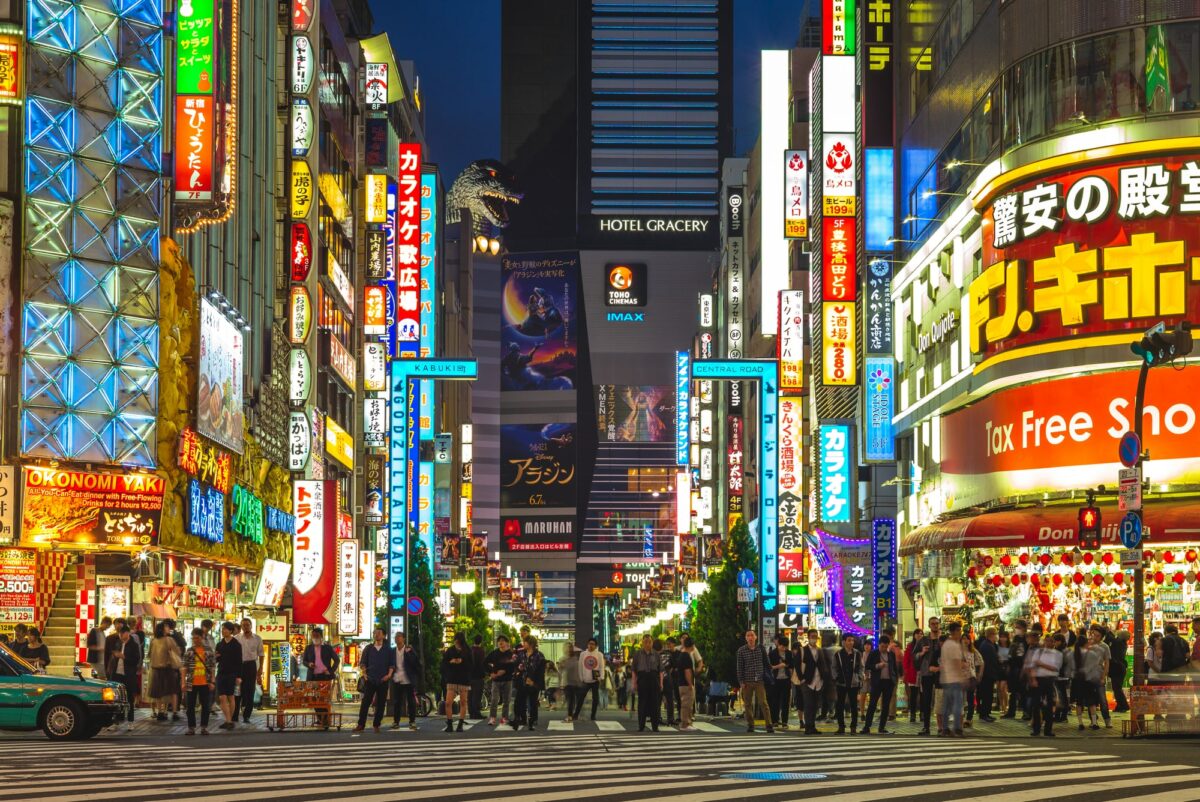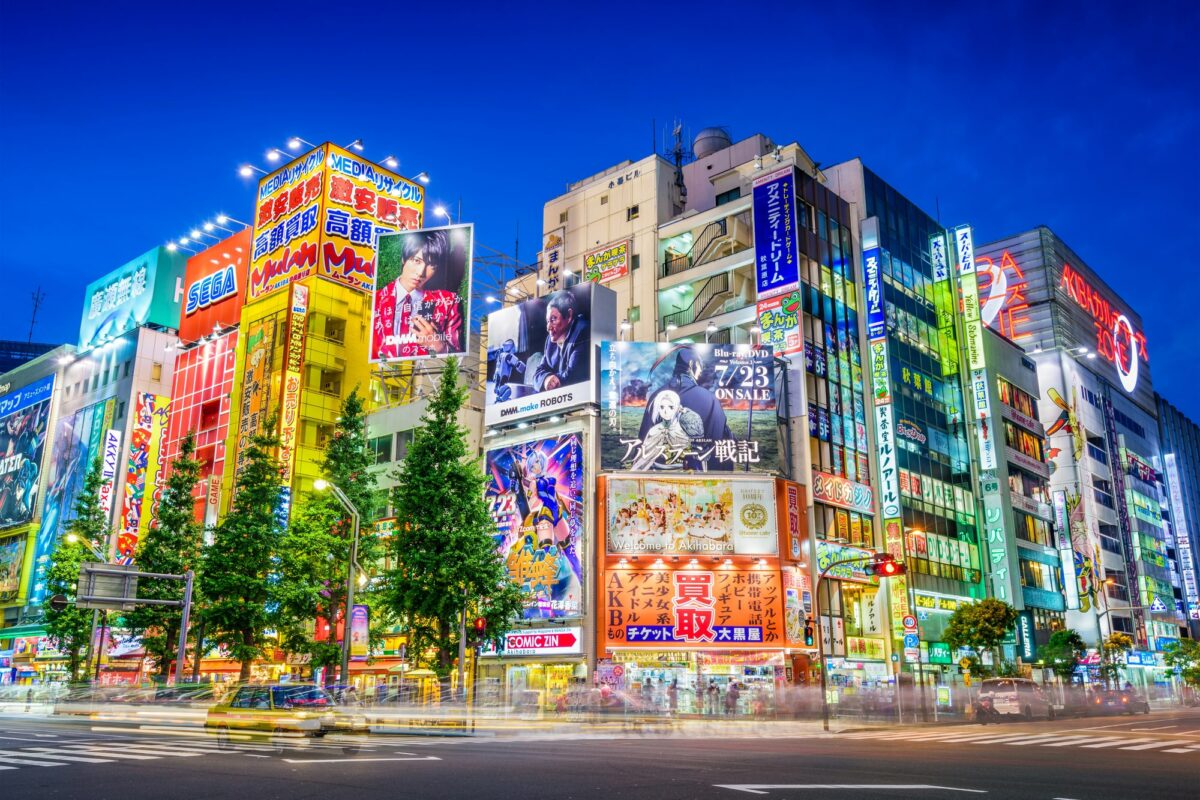So you’re ready to explore the biggest city in the world. So much to see—so little time.
What can you see in Tokyo with a 2-day itinerary?
Knowing which attractions to prioritize can be hard if it’s your first time in Tokyo. Let’s take a stroll through Tokyo and explore 10 famous sightseeing spots to get a taste of the real Tokyo.
From the famous Shibuya scramble crossing to lesser-known Shimokitazawa to a tranquil Shinto shrine in the middle of the city— here are 10 must-visit places that make Tokyo a city like no other.
And the best part? You can do them all in 2 days with a well-planned itinerary like this one! (I’ve also included 4 extra spots for those with more than 48 hours in the city)
Day 1
1. Hachiko Statue & Shibuya Crossing

First stop, Shibuya Crossing.
A quintessential Tokyo experience, you’ve probably seen it in movies, anime, or Instagram– it’s one of the busiest pedestrian intersections in the world.
Imagine the chaos of hundreds of people rushing forth to cross from all directions when the lights turn green. The Starbucks nearby is a well-known spot for taking great time-lapse videos of the scramble crossing.
While you’re there, don’t forget to snap a photo with the iconic Hachiko statue nearby, a heartwarming tribute to the loyal dog who waited for his late owner every day.
If you have the time, I also recommend walking over to Shibuya’s center street, where you can find local restaurants and shopping stores.
2. Harajuku: Rainbow Aesthetic and Pop Culture
Just one train station away from Shibuya is Harajuku, the epicenter of youth, pop culture and “kawaii” aesthetics. Representing this is Takeshita Street, where you can find the latest street food trends in rainbow colors, kawaii animal cafes, maids, cosplayers, and an abundance of shopping.
You can often find local internet celebrities, YouTubers, and TV stations filming around Takeshita Street. Be prepared to fight through the throng of tourists and locals on any given day!
3. Meiji Jingu: Serene Shinto Shrine

A short walk from the hustle and bustle of Harajuku’s Takeshita Street lies the serene Meiji Shrine, 1 of the 3 most important Shinto shrines in Japan.
Nestled in lush greenery, Meiji Jingu is dedicated to Emperor Meiji and Empress Shoken, both of whom played pivotal roles in establishing the modern-day Japan we know today.
The peaceful surroundings at the shrine are perfect for a quiet stroll, and if you’re in Japan around New Years Day, be sure to go to “Hatsumode”, or first shrine visit of the year to pray for good luck for the new year. Other events and matsuri festivals are also held at different times of the year, so be sure to check for the dates you are going.
Even if there are no events, you can pull your “omikuji”, or fortune, and write a prayer or wish on the wooden plaques known as ema.
Visiting Meiji Shrine to experience traditional Japanese culture right after the modern popular kawaii culture of Harajuku may be a bit of a shock to the system, but this contradiction is the soul of modern-day Tokyo.
4. Shinjuku: City Center

After lunch, check out Shinjuku’s Godzilla statue, numerous street fashion stores, and local restaurants.
If you get tired of the city’s humdrum, go to Shinjuku Gyoen, a beautiful and tranquil spread of green in the middle of the city. For a breath of fresh air, check out the seasonal flowers, Japanese garden, and architecturally gorgeous Starbucks inside the garden.
5. Tokyo Tower: Taller than the Eiffel

Evening is my favorite time to see the Tokyo Tower.
Built in 1958, Tokyo Tower is majestic in the day but breathtaking when lit up at night and shining bright as the symbol of the city. Offering gorgeous panorama views of the city, this is especially spectacular at nighttime when the whole of Tokyo twinkles far below you.
If you go during the daytime and it’s sunny and clear, you might even spot Mount Fuji in the distance. Though originally modeled after the Eiffel Tower, it’s actually taller than its model by 3 meters!
For an added thrill, check out the glass-floor “lookdown window” on the Main Deck – it’s not for the faint-hearted!
Day 2
On day 2, explore the city’s East side by the Sumida River. I would start my morning in Asakusa, at Senso-ji.
6. Sensō-ji Temple

Let’s head to Asakusa to visit Sensō-ji, Tokyo’s oldest temple.
As you walk through the giant Thunder Gate (Kaminarimon), you’ll find yourself in Nakamise-dori, a lively street lined with traditional shops selling snacks and souvenirs. The Ningyo-yaki (doll-shaped buns) and other street foods make for a decent breakfast!
There are often locals in traditional kimono or yukata walking around the temple. Senso-ji is well-known as a temple to pray for recovery from illness, peace, and luck, as well as success in business and school. The blend of vibrant colors and sacred atmosphere makes Sensō-ji a magical place to explore.
7. Akihabara: Anime, Electronics

A few stations away is the electric town of Akihabara, a paradise for tech enthusiasts and anime and manga fans.
Affectionately called Akiba by locals, this spirited district is packed with electronics stores, crane game arcades, and themed cafes. You’ll definitely see a few maids trying to rope you into their café!
Whether hunting for the latest gadgets or immersing yourself in otaku culture, Akihabara is a unique experience you can only get in Japan. Don’t miss the multi-story Yodobashi Camera store – it’s an electronics wonderland and one of the biggest in all of Japan!
8. Ueno Park: Pandas and Cherry Blossoms

A 15 minute walk away is Ueno Park, another sprawling park in the heart of Tokyo. It’s famous for the cherry blossoms in spring, but there’s plenty to see year-round.
The park is home to several museums, including the Tokyo Metropolitan Art Museum, Tokyo National Museum, and the Ueno Zoo, famous for its pandas.
You can also rent a rowboat or swan boat for less than $10 and paddle around Shinobazu Pond, the perfect spot to relax and people-watch. I especially recommend this during cherry blossom season!
9. Tokyo Skytree: Stunning Views and Shopping

Crossing the Sumida River, you can head to Tokyo Skytree, the tallest structure in Japan.
Newer and taller than even Tokyo Tower, check out the observation decks for a breathtaking glimpse of the city that stretches all the way to the horizon. There are 2 levels to the observation decks, the Tembo Deck and the Tembo Galleria, the highest platform. There is an additional fee to go to the Galleria.
On the tower’s base floors, there are loads of souvenir stores, a shopping complex, and an aquarium, making it a fun destination for all ages. The Skytree is especially beautiful when illuminated at night.
10. Odaiba: Interactive Art Museum

Last but not least, let’s visit Odaiba, a man-made island in Tokyo Bay. In recent years, the most popular attraction here has been the interactive digital art exhibitions at TeamLab Borderless.
While at Odaiba, you can also enjoy the giant Gundam statue, check out the “Miraikan” (Future Museum), ride on the Ferris wheel, or explore the shopping malls. Odaiba offers a mix of fun and relaxation with stunning views of Tokyo Bay and the Rainbow Bridge, which is lit up at night.
Tokyo Extras Edition
These are my personal must-sees for first-time visitors to Tokyo, but if you have a third day, I recommend checking out these places as well!
11. Tokyo Station
Like Shinjuku Station, Tokyo Station is ginormous and can be difficult to navigate. However, the red brick architecture is gorgeous, especially while lit up at night, and you can often find couples taking their wedding photoshoots in front of the station.
12. Sunshine Aquarium at Ikebukuro
This aquarium is even better than the Sumida Aquarium at Skytree. Beautifully designed as an indoor-outdoor space, the must-see is definitely the penguins floating in the sky over the city center.
13. Ginza & Roppongi
Ginza is Tokyo’s luxury shopping district akin to 5th Avenue in New York. Besides its high-end boutiques and department stores, several Michelin-star restaurants are also in the area.
Even if you’re not in the mood for shopping, Ginza is worth a visit for its sleek architecture and vibrant atmosphere. On weekends, the main street is closed to traffic, making it a pedestrian paradise. Around Christmas, the streets are decorated with twinkling golden lights from end to end and is gorgeous to behold.
Read here about where to find 80 different soy sauces in Ginza, and if you’re lucky, you can get a tasting.
In a similar vein, Roppongi is also a more high-scale shopping area, and from its streets, you can get a great view of the Tokyo Tower.
14. Shimokitazawa
Well known for its high-end thrift stores and artsy vibe, this trendy neighborhood offers delicious brunch, stylish cafes, local art events, and markets.
Shimokitazawa is not usually on most foreign tourists’ itineraries but is extremely popular with local Japanese tourists and Tokyo residents alike.
Conclusion
Tokyo is a city that seamlessly melds the traditional with the modern, offering an endless lineup of experiences for any traveler, young or old. Whether you’re drawn to its historic temples, cutting-edge technology, or modern pop culture, there’s always something exciting to discover. So, lace up your walking shoes, get out your camera, and get ready to explore the wonders of this metropolis!
These 14 spots are just the beginning. Tokyo is full of hidden gems and surprises around every corner. I recommend exploring on foot if you have extra time!

Leave a Reply